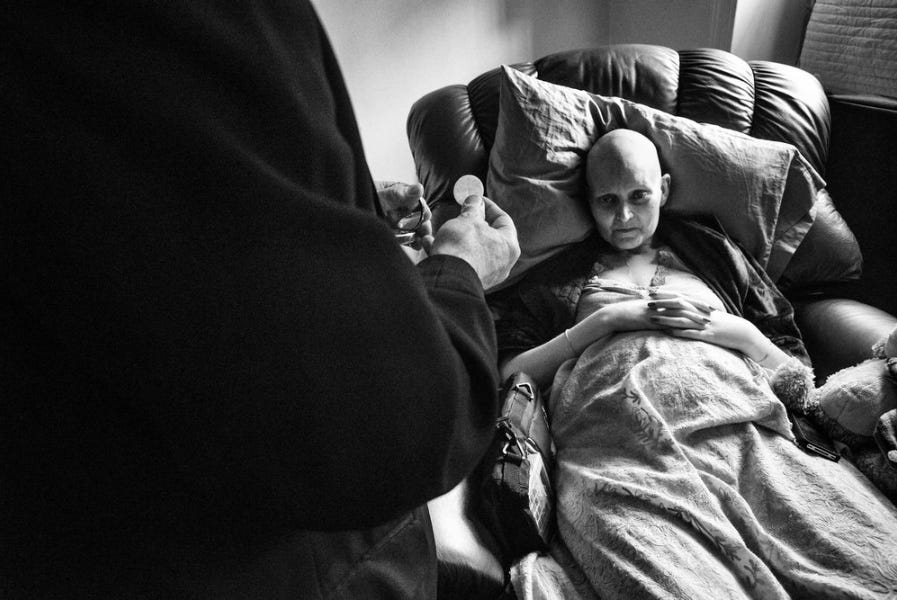Waiting For Some Amazing Grace, Part 2: In The Studio
This is part two of a series about my new album, Two-Headed Hearts, with my band Paul Jacobsen & The Madison Arm. I’ll be talking about the songs, the recording process, and other stuff. Or I may pull a Sufjan and abandon the project after doing these first two. Either way, here goes.
I’ve always (understandably) leaned on my friend and producer Scott Wiley to just…make magic happen in the studio. And why wouldn’t I, when he always has? On my first album, I literally just showed up and he had hired the entire band—a drummer I’d never met (and have never seen since), a bassist and keyboard player from a band I loved, and Scott on guitar. That might sound risky, but I trusted and trust him implicitly, and that trust cashed itself all the way in. On my second album, there were times when I couldn’t tell up from down with what to do on a song, but Scott always seemed to have a secret compass or a trusty flashlight to guide the song home. This time around, though, I felt a bit of a spiritual mandate to carry my weight, give the band some context, and set the table, so to speak, to help Scott get everybody on the same page for the spirit of the songs. Make no mistake: I didn’t produce the record. That’s all Scott. But I tried to set the scene for each song in the studio.
In the case of “Carvertown,” setting the scene meant reading an excerpt from author/musician Willy Vlautin’s “The Motel Life.”
And in the case of “Some Amazing Grace”, to try to get the players to understand where the song was coming from, I showed them this absolutely gorgeous and envelopingly devastating photo series.
https://www.angelomerendino.com/my-wifes-fight-with-breast-cancer
I wasn’t sure how I felt, intruding upon the photographer’s personal tragedy, but I ultimately decided that he had documented it as a witness to his & his wife’s experience with cancer, and one of my principal missions as a songwriter/artist—as high falutin’ as it may sound—is to witness to what it is to be a human. The photos and the song both strive to do this. So, I thought maybe I was doing right by Angelo’s wife and my brother to use this wrenching series to help illustrate how it was for Angelo, his wife, Ben, his wife, and for me and so many who love our people who suffer through cancer. We projected Angelo’s incredible photos up on the studio’s big television and scrolled slowly through. The room fell silent as we progressed chronologically through her experience—she got skinnier and skinnier, weaker and weaker. And when we got to one of the later photos, I somehow sputtered the words,
“That, that photo is where this song takes place.”

And then I lost it. Just crumbled. Trembling and dripping. It was horribly vulnerable and, for a person who hates to cry in public (some of you are just fine with it and cry beautifully and elegantly, and I turn into a giant nerve), I knew I was rolling emotional dice that were loaded “against” me. I guess that’s one reason I believe so heartily in surrounding yourself with musicians who you love and trust as friends. In the studio that day, I could’ve felt exposed (ok, I did, but it was a secure kind of exposed), but I had Scott and Ryan Tanner and Pat Campbell and Stephanie Mabey and Ryan Shengren in there. So I dared.
When I finally thought I had it together enough, we picked up our instruments and went to it. The first take’s vocal was 90% tears, a saline mess. You want emotion in a song, but not that way. Scott empathetically asked if I wanted to take a break. I composed myself, having gotten at least that day’s tears (mostly) out of my system, and the take you hear on the album is the next one, the second time through. Still raw and as close to the bone as I could get without being a puddle on the floor, still a quavering note here, a break there. If you’ve seen me try to perform the song live over the years, you know what I’m talking about.
It’s, as the kids say, a real one. I’m not singing it with any technical prowess, attempting to throw in just the right amount of rasp or some emotive little triplet run. It’s directly from concentrate. That can be scary. But it feels right.
Producer Joe Henry once said, “When my wife’s beloved grandmother was telling us how she made a piecrust, she said, ‘Then you add some cold water to the flour and shortening.’ ‘How much water?’ my wife asked. ‘Oh, just enough, but not more,’ she replied. And that’s how long you work on a song.” I feel like that’s exactly what Scott did—the song has precisely the touches and instrumentation it needs, but not more.
Stephanie’s vocal is perfect. Ryan’s complementary acoustic guitar is perfect too (Scott panned them left and right, so you can hear just how much Ryan was really listening. Heaven knows it wasn’t me.)
There are a few moments in the studio that are etched in my mind forever and this one, as difficult as it was, is a Top 3 for sure.
Listen to it here, or wherever you like.
This one’s for Ben and whoever your Ben may be.




